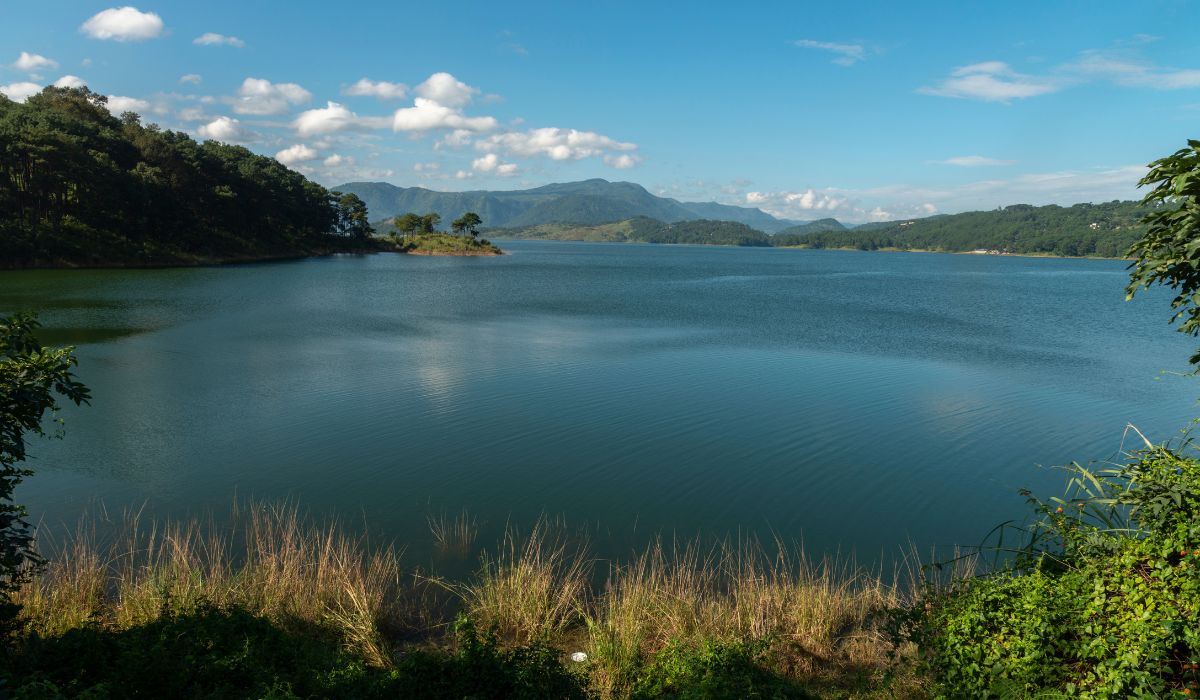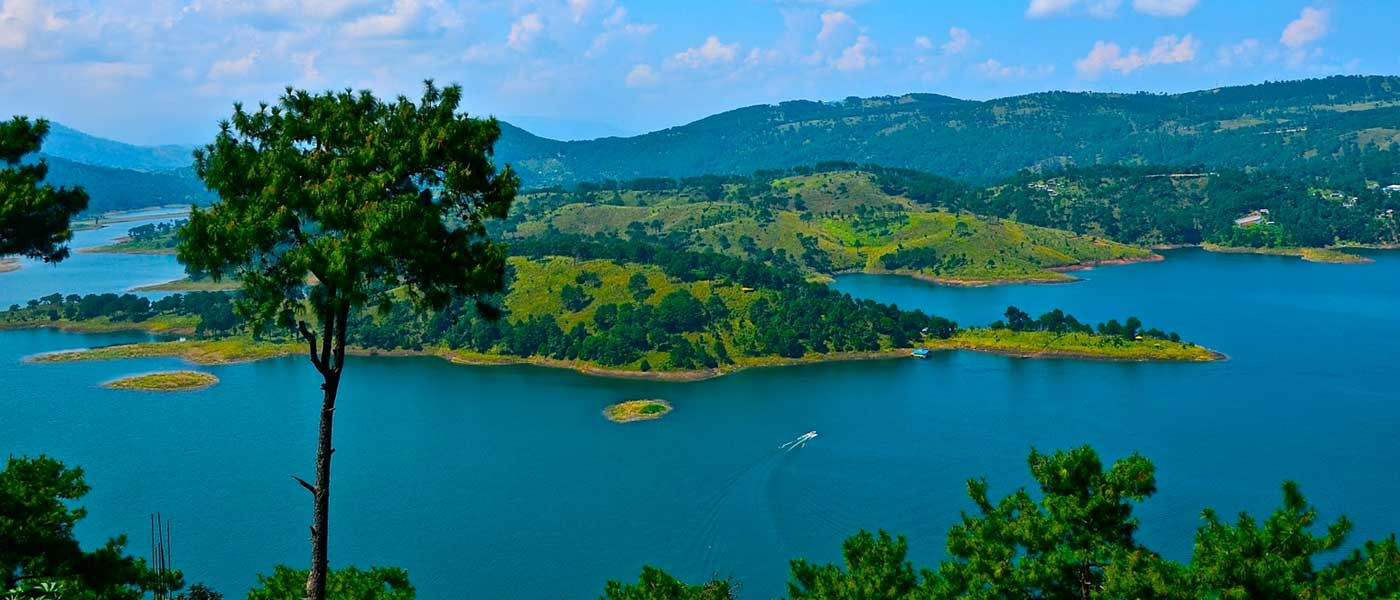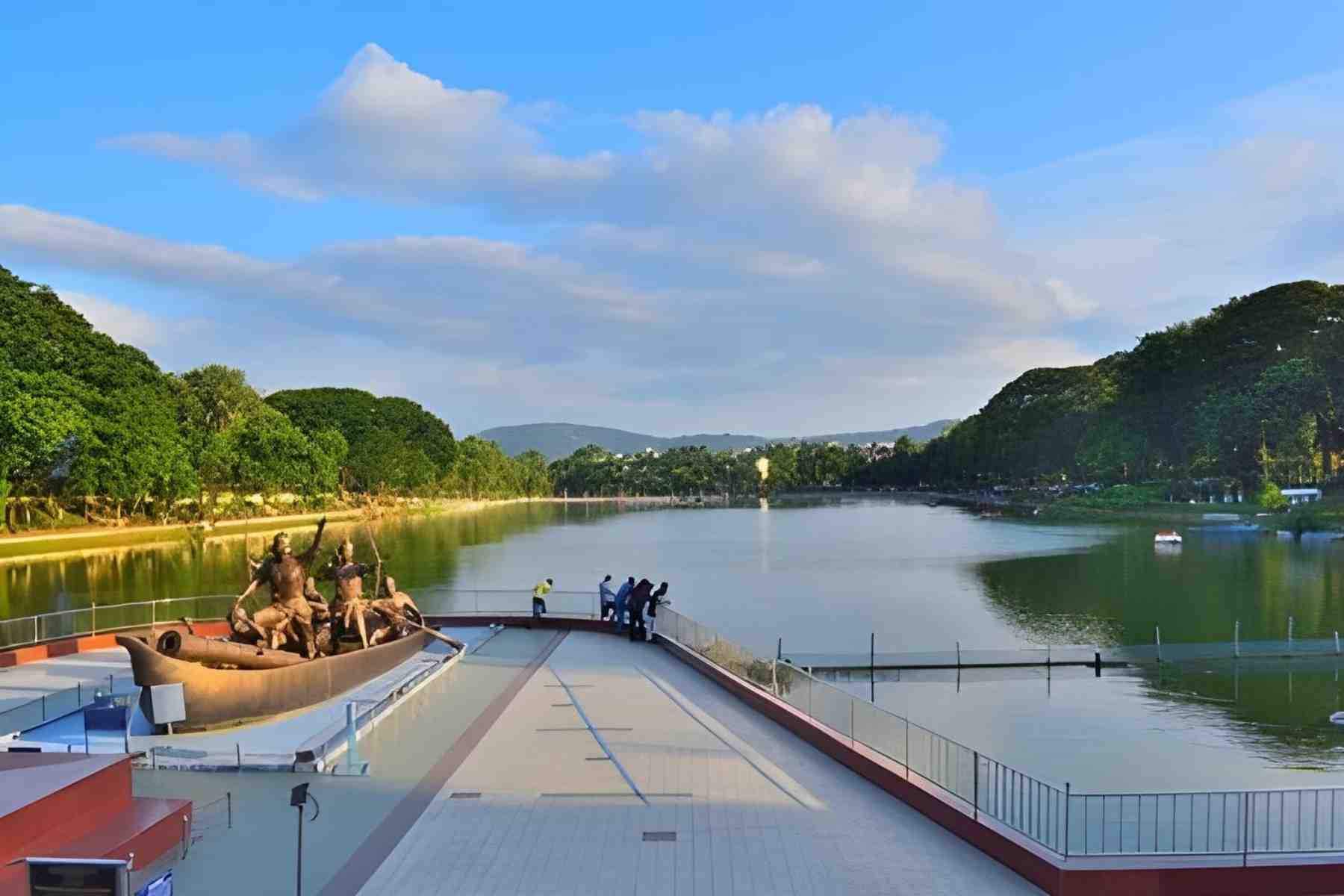Guwahati Tour Package: Discover Assam's Cultural Heart
Published on February 08, 2025
Guwahati Tour Package: Discover Assam's Cultural Heart
Nestled on the southern bank of the mighty Brahmaputra River, Guwahati stands as a vibrant gateway to Northeast India's cultural tapestry. This ancient city, whose name translates to "the village of the Kachari king," serves as more than just a transit point for travelers exploring Assam – it is a living museum of history, spirituality, and tradition that has evolved gracefully through centuries while maintaining its authentic cultural essence. As the largest city in Northeast India and one of the oldest continuously inhabited places in Asia, Guwahati offers visitors an unparalleled opportunity to experience the confluence of modernity and heritage.
The significance of Guwahati extends far beyond its geographical importance; it represents the cultural heart of Assam, where ancient traditions harmoniously blend with contemporary lifestyles. The city's strategic location makes it an ideal starting point for discovering Assam's rich cultural landscape, from its magnificent temples and historical monuments to its bustling markets and traditional villages. Opting for a Guwahati tour package allows visitors to witness the seamless integration of various ethnic communities, each contributing their unique customs, languages, and artistic expressions to create a fascinating cultural mosaic.

Through carefully curated Guwahati tour packages, travelers can immerse themselves in this cultural wealth, exploring everything from age-old religious practices at Kamakhya Temple to the vibrant rhythms of Bihu dance performances. These packages offer not just sightseeing opportunities but meaningful cultural experiences that reveal the soul of Assam. Whether it's savoring traditional Assamese cuisine, participating in local festivals, or learning about indigenous crafts, Guwahati serves as the perfect introduction to the region's diverse cultural heritage.
Historical Significance and Architectural Marvels
Guwahati's historical narrative unfolds through its remarkable architectural landmarks, each telling a story of the city's glorious past. At the forefront stands the majestic Umananda Temple, perched on Peacock Island in the middle of the Brahmaputra River. Built in 1694 by King Gadadhar Singha, this Shiva temple exemplifies Ahom dynasty architecture, featuring intricate carvings and a unique location that makes it accessible only by boat. The temple's construction during the reign of the powerful Ahom kings marks a significant period in Assam's history when Hinduism flourished alongside indigenous tribal beliefs.
Equally impressive is Navagraha Temple, dating back to the 18th century, which served as an ancient center for astrology and astronomy. Its nine domes, representing the nine celestial bodies, showcase distinctive Assamese architectural elements combined with tantric influences. The temple's role as an ancient observatory highlights Guwahati's historical significance as a center of learning and spiritual advancement. During colonial times, these temples faced challenges but emerged stronger, becoming symbols of cultural resilience.
The city's colonial-era structures, such as the historic Cotton University buildings and the Deputy Commissioner's Office, reflect British influence while incorporating local architectural elements. These buildings demonstrate how Guwahati adapted foreign styles while maintaining its cultural identity. The preservation of these sites through careful restoration efforts ensures that future generations can appreciate the city's rich historical layers, from ancient kingdoms to colonial administration, all contributing to its present-day cultural fabric.

Spiritual Journey Through Sacred Sites
Guwahati's spiritual landscape is dominated by the revered Kamakhya Temple, a site of profound religious significance and mystical allure. Perched atop Nilachal Hill, this 8th-century Tantric temple complex draws millions of devotees annually, particularly during the Ambubachi Mela, when the goddess Kamakhya is believed to undergo her annual menstruation cycle. The temple's unique architecture, featuring beehive-shaped shikharas and gold-plated domes, reflects both ancient Assamese and North Indian Nagara styles. Inside, the main sanctum houses no idol but contains a yoni-shaped stone instead, symbolizing the goddess's creative power.
The spiritual atmosphere intensifies during the three-day Durga Puja celebrations, when the entire city transforms into a sea of devotion and festivity. Elaborate pandals spring up across Guwahati, each showcasing artistic interpretations of the goddess's divine forms. The rhythmic beats of dhols and the fragrance of incense fill the air as processions wind through streets decorated with marigold garlands. Local communities come together to prepare traditional offerings, including khar and tenga dishes, while artisans display their skills in creating intricate idols and decorative items.
Beyond Kamakhya, numerous other sacred sites contribute to Guwahati's spiritual tapestry. The Basistha Ashram, founded by the great sage Vasistha, offers tranquil surroundings where visitors can meditate beside natural springs believed to have healing properties. Sukreswar Temple, dedicated to Lord Shiva, provides panoramic views of the Brahmaputra and hosts evening aarti ceremonies that draw both pilgrims and tourists. These spiritual destinations collectively create an environment where ancient traditions thrive alongside modern practices, allowing visitors to experience firsthand the deep-rooted faith that permeates every aspect of life in Assam's cultural capital.

Culinary Delights and Traditional Cuisine
Guwahati's culinary landscape serves as a delicious portal into Assam's rich cultural heritage, offering visitors an authentic taste of traditional flavours that have been perfected over generations. The city's bustling markets, particularly the famous Fancy Bazaar and Paltan Bazaar, combine fresh produce and aromatic spices that form the foundation of Assamese cuisine. Must-try local specialities include masor tenga, a tangy fish curry prepared with tomatoes and lemon, and khar, a unique dish made with raw papaya and filtered ashes from banana tree stems, which gives it a distinctive alkaline flavour profile.
For those seeking immersive culinary experiences, many restaurants and home-based eateries offer cooking demonstrations where visitors can learn traditional preparation methods. Notable establishments like Heritage Khorika and Machaan serve exquisite renditions of classic dishes while providing insights into their cultural significance. Street food enthusiasts should explore the evening markets near Latasil and Panbazar, where vendors serve hot pithas (rice cakes) and ghila pitha (fried rice pancakes) alongside steaming cups of lai chai (spiced milk tea).
Local markets also present excellent opportunities to purchase authentic Assamese ingredients and spices to recreate these flavours at home. The weekly tribal markets, known as haats, showcase fresh produce, traditional bamboo utensils, and handcrafted storage containers used in Assamese kitchens. For a complete gastronomic journey, visitors can participate in community meals during festivals, where multiple generations gather to prepare elaborate feasts using age-old recipes passed down through families.

Natural Wonders and Scenic Beauty
Guwahati's natural splendour unfolds through its breathtaking landscapes and abundant wildlife, offering visitors an unparalleled connection with nature. The Deepor Beel Wildlife Sanctuary, a Ramsar site and one of Asia's largest freshwater wetlands, serves as a crucial habitat for migratory birds and endangered species like the Asian elephant and fishing cat. Visitors can explore its extensive waterways through guided boat tours, witnessing the spectacular sight of thousands of birds taking flight at dawn. The sanctuary's observation towers provide panoramic views of the surrounding wetlands, making it an ideal spot for birdwatching and photography enthusiasts.
The nearby Pobitora Wildlife Sanctuary, though smaller in size, boasts the highest density of one-horned rhinoceroses in the world. Jeep safaris through its grasslands and wetlands offer close encounters with these magnificent creatures, along with opportunities to spot wild boars, sambar deer, and various reptile species. For those seeking tranquillity, the Brahmaputra River's expansive waters present endless possibilities for river cruises and sunset viewing, particularly from the scenic Sukapha Setu bridge.
Guwahati's green spaces extend to its urban areas, with notable parks like the Guwahati Zoo and Rani Reserve Forest providing welcome retreats within the city limits. The Brahmaputra riverfront development project has transformed the embankments into pleasant walking paths lined with native flora, while the newly developed Assam State Zoo cum Botanical Garden showcases both regional biodiversity and exotic plant species. These natural attractions not only enhance the city's aesthetic appeal but also play a vital role in preserving Assam's ecological heritage while offering visitors authentic outdoor experiences.

Cultural Festivals and Vibrant Traditions
Guwahati's cultural calendar bursts with vibrant festivals that showcase Assam's rich artistic heritage and communal spirit. The most anticipated event, the Rongali Bihu festival in April, transforms the city into a kaleidoscope of colour and celebration. Streets come alive with spontaneous performances of Bihu dance, where young men and women dressed in traditional muga silk garments move rhythmically to the beats of dhol drums and pepa (flute-like instruments). Locals gather in community spaces called namghars to prepare traditional delicacies and share stories, fostering intergenerational connections through shared cultural practices.
During the Magh Bihu harvest festival in January, visitors can witness the construction of mejis (traditional bonfires) along the Brahmaputra riverbanks. As night falls, these structures are set ablaze in a spectacular display, accompanied by traditional songs and dances celebrating agricultural abundance. The festival culminates in community feasts featuring freshly harvested rice and seasonal vegetables, prepared in open-air kitchens using traditional earthenware.
Throughout the year, various cultural centres and institutions host regular performances of Satriya dance and drama, recognised by UNESCO as Intangible Cultural Heritage. These classical art forms, originating from the Vaishnavite monasteries of Assam, feature intricate hand gestures, graceful movements, and elaborate costumes. Modern adaptations of these traditional performances often incorporate contemporary themes while maintaining their authentic essence, demonstrating how Guwahati successfully bridges ancient traditions with current artistic expressions.
Artisanal Heritage and Traditional Crafts
Guwahati stands as a vibrant hub for Assam's rich artisanal traditions, where ancient crafting techniques continue to thrive amidst modern developments. The city's numerous craft emporiums and workshops showcase the exceptional skill of local artisans who specialise in producing traditional Assamese products. Among these, the intricate bamboo and cane work remains particularly noteworthy, with craftsmen creating everything from functional furniture to delicate jewellery boxes using time-honoured weaving techniques passed down through generations. The famous Jaapi hats, traditionally worn during Bihu celebrations, exemplify this craftsmanship, featuring intricate designs woven from locally sourced bamboo splits.

Textile production forms another cornerstone of Guwahati's artisanal heritage, with numerous weavers' cooperatives and private workshops producing the renowned Muga, Eri, and Pat silks. Visitors can observe skilled weavers operating traditional looms in areas like Sualkuchi, often referred to as the "Manchester of the East," where they create exquisite mekhela chadors adorned with traditional motifs. These textiles not only serve as practical garments but also carry deep cultural significance, with specific patterns and colours denoting different tribal communities and social statuses.
For those interested in acquiring authentic Assamese crafts, several government-run emporia like the Assam Emporia and private galleries offer genuine products while ensuring fair trade practices. Artisans' markets held regularly throughout the city provide direct access to creators, allowing visitors to learn about production processes and support local communities directly. Many workshops now offer hands-on experiences where tourists can try their hand at basic weaving or bamboo crafting under expert guidance, creating personal souvenirs while gaining a deeper appreciation for these traditional skills.
Practical Travel Guide and Seasonal Recommendations
Planning a memorable trip to Guwahati requires careful consideration of timing and logistics. The optimal visiting period spans from October to April, when the weather remains pleasant with daytime temperatures ranging between 20-30°C. This period coincides with major festivals like Durga Puja and Rongali Bihu, offering visitors the chance to experience authentic cultural celebrations. While summer months (May to September) bring heavy monsoon rains, they transform the surrounding landscapes into lush greenery and make river cruises particularly scenic.
Reaching Guwahati is convenient through Lokpriya Gopinath Bordoloi International Airport, well-connected with major Indian cities and select international destinations. The city's efficient public transportation system includes metered taxis, auto-rickshaws, and app-based cab services, making intra-city travel hassle-free. For longer excursions, the railway network provides comfortable connectivity to other parts of Assam and neighbouring states. Accommodation options range from luxury hotels along the Brahmaputra riverfront to budget guesthouses in Panbazar and Paltan Bazaar areas, catering to diverse preferences and budgets.
Visitors should pack light cotton clothing for summer months and warmer layers for winter evenings. Comfortable walking shoes are essential for temple visits and market exploration, while rain gear becomes necessary duringthe monsoon season. Most tourist sites operate between 6 AM to 6 PM, with some temples having specific visiting hours for darshan. To fully experience local culture, consider staying in heritage accommodations or boutique hotels that offer traditional Assamese hospitality and cuisine.
Embracing Guwahati's Cultural Tapestry
Guwahati emerges as more than just a tourist destination; it stands as a living testament to Assam's enduring cultural legacy. The city's remarkable ability to preserve its ancient traditions while embracing modernity creates an unparalleled travel experience that resonates deeply with visitors. From the sacred chants echoing through Kamakhya Temple's ancient corridors to the vibrant rhythms of Bihu dancers in city squares, every aspect of Guwahati tells a story of cultural continuity and evolution. The careful preservation of traditional crafts, culinary arts, and performing arts demonstrates the community's commitment to maintaining its cultural identity in an increasingly globalised world.
The value of experiencing Guwahati extends beyond mere sightseeing; it offers a profound opportunity to connect with the authentic spirit of Assam. Through interactions with local artisans, participation in traditional festivals, and exploration of historical sites, visitors gain insight into the region's rich cultural tapestry. This firsthand experience fosters greater appreciation for the delicate balance between progress and preservation that defines modern Guwahati. The city's welcoming atmosphere encourages cultural exchange, allowing travellers to become temporary participants in its vibrant daily life rather than passive observers.
As Northeast India continues to open its doors to tourism, Guwahati serves as the perfect introduction to the region's cultural wealth. Its strategic location, combined with a Guwahati travel package that thoughtfully blends historical exploration, spiritual journeys, and natural adventures, makes it an ideal starting point for discovering Assam's cultural heart. Visitors leave not just with photographs and souvenirs, but with lasting memories of authentic cultural encounters that enrich their understanding of India's diverse heritage.
Guwahati Sightseeing Guide – Discover the Gateway to Northeast India
Guwahati, nestled on the banks of the mighty Brahmaputra River, is the largest city in Assam and a vibrant gateway to Northeast India. Known for its blend of natural beauty, ancient temples, rich culture, and urban charm, Guwahati offers something for every kind of traveller. Here's a guide to some of the top sightseeing places you must explore when in Guwahati.
? 1. Kamakhya Temple – A Spiritual Marvel
One of the most revered Shakti Peethas in India, the Kamakhya Temple is dedicated to Goddess Kamakhya. Located on Nilachal Hill, this ancient temple attracts thousands of devotees, especially during the Ambubachi Mela in June.
-
Highlights: Tantric rituals, scenic hilltop views, and spiritual ambience.
-
Best Time to Visit: Early morning or during festivals for a more vibrant experience.
? 2. Umananda Island – The Smallest River Island
Situated in the middle of the Brahmaputra River, Umananda Island is known as the world's smallest inhabited river island. It houses the Umananda Temple, dedicated to Lord Shiva, and is accessible by a short ferry ride from the city.
-
Highlights: Peaceful surroundings, ferry rides, and a serene Shiva temple.
-
Tip: Visit during sunset for a mesmerising river view.
?️ 3. Assam State Zoo & Botanical Garden – Family-Friendly Fun
Spread over 432 acres, the Assam State Zoo is home to a wide variety of animals, birds, and reptiles, including the endangered one-horned rhinoceros and the majestic Royal Bengal tiger. The adjoining botanical garden adds to the greenery and makes it a perfect place for nature lovers.
-
Ideal For: Families, children, and wildlife enthusiasts.
-
Timings: Open daily except Fridays.
? 4. Navagraha Temple – The Temple of Nine Planets
Perched on Chitrachal Hill, the Navagraha Temple is dedicated to the nine celestial bodies of Hindu astrology. It's a place of both religious importance and astronomical interest.
-
Fun Fact: The temple also served as an ancient centre for astronomical studies.
-
Views: Offers panoramic views of the city from the hilltop.
? 5. Pobitora Wildlife Sanctuary – A Rhinoceros Paradise
Located just 50 km from Guwahati, Pobitora Wildlife Sanctuary is a hidden gem known for having the highest density of one-horned rhinoceroses in the world. It’s an excellent alternative to Kaziranga for wildlife lovers.
-
Activities: Jeep safaris and elephant rides.
-
Best Time: November to March for comfortable weather and animal sightings.
? 6. Brahmaputra River Cruise – Romantic and Relaxing
A cruise on the Brahmaputra River is one of the most unique experiences in Guwahati. Whether it's a sunset cruise, dinner cruise, or a day-long ride, it offers scenic views and a taste of the local culture.
-
Tip: Book in advance during the peak tourist season (October to March).
-
Bonus: Enjoy Assamese cuisine and cultural performances onboard.
?️ 7. Fancy Bazaar – Shopper’s Paradise
For a touch of local life, head to Fancy Bazaar, Guwahati’s busiest market. From clothes and handicrafts to traditional Assamese items, this place is ideal for picking up souvenirs and local delicacies.
-
Must Buy: Assamese silk mekhela chador, bamboo products, and pickles.
-
Best Time to Visit: Evening, when the market is in full swing.
Guwahati is more than just a city—it's a perfect mix of spiritual depth, natural beauty, and cultural richness. Whether you're here for a short trip or using it as a base to explore the Northeast, Guwahati’s charm is bound to leave a lasting impression.
So pack your bags and get ready to discover the heart of Assam!
Why Choose Tour My Holiday for Your Travel Adventures?
When it comes to planning a hassle-free and unforgettable journey, choosing the right travel partner makes all the difference. Tour My Holiday stands out as a trusted name in the travel industry, offering well-crafted tour packages, personalised service, and unbeatable value. Here’s why thousands of happy travellers continue to choose us for their dream vacations.
✅ 1. Expertly Designed Tour Packages
Whether you’re looking for a serene Himalayan escape, a beachside retreat, or a cultural city tour, Tour My Holiday has something for everyone. Our itineraries are thoughtfully designed to include the best sightseeing spots, local experiences, and enough leisure time to relax and enjoy your trip.
-
Domestic & International Packages
-
Customised Group Tours, Honeymoons, Family Trips
-
Budget-friendly to Luxury Options
?? 2. Personalised Customer Support
At Tour My Holiday, we don’t believe in one-size-fits-all. Our dedicated travel experts are available to understand your preferences and help you plan a trip that suits your taste, budget, and travel style.
-
24/7 Support During Travel
-
Local Assistance in Case of Emergencies
-
Detailed Guidance at Every Step
? 3. Transparent Pricing, No Hidden Charges
We value your trust. Our pricing is clear and straightforward. What you see is what you pay—no last-minute surprises or hidden fees. Every detail of your tour, from accommodations to inclusions, is clearly explained in advance.
-
Honest and Fair Pricing
-
Flexible Payment Options
-
Full Breakdown of Costs Provided
? 4. Verified Hotels and Transport
Comfort and safety are our top priorities. We collaborate with handpicked hotels and verified transport partners to ensure a smooth and comfortable travel experience. You’ll stay in quality accommodations and travel in clean, reliable vehicles.
-
Hygienic and Safe Travel Practices
-
Certified Local Guides and Drivers
-
Regular Quality Checks
? 5. Trusted by Hundreds of Happy Travellers
With glowing testimonials and repeat customers, Tour My Holiday has earned a reputation for delivering memorable experiences. Whether you're trekking in Chopta, exploring Krabi, or relaxing in Shimla, you can count on us.
✈️ Let’s Plan Your Next Journey Together!
Choose Tour My Holiday — where your travel dreams become reality. Let us handle the planning while you enjoy the journey.
FAQs About Guwahati Tourism
1. Q: What is the best time to visit Guwahati?
A: The best time to visit Guwahati is from October to April, when the weather is pleasant and ideal for sightseeing and outdoor activities.
2. Q: What are the top tourist attractions in Guwahati?
A: Kamakhya Temple, Umananda Island, Assam State Zoo, Navagraha Temple, and Brahmaputra River Cruise are some of the top attractions.
3. Q: How can I reach Guwahati?
A: Guwahati is well-connected by air (Lokpriya Gopinath Bordoloi Airport), rail (Guwahati Railway Station), and road with major cities of India.
4. Q: Is the Kamakhya Temple open to all tourists?
A: Yes, Kamakhya Temple is open to all. However, during festivals like Ambubachi Mela, it gets very crowded.
5. Q: Are there any river cruises in Guwahati?
A: Yes, you can enjoy sunset or dinner cruises on the Brahmaputra River, offering scenic views and cultural performances.
6. Q: Is Guwahati a safe city for tourists?
A: Guwahati is generally safe for tourists, but it’s advisable to take standard precautions like you would in any city.
7. Q: What are the famous local foods to try in Guwahati?
A: Try dishes like Assamese thali, pitha, tenga fish curry, momos, and bamboo shoot pork.
8. Q: Are there good shopping areas in Guwahati?
A: Yes, Fancy Bazaar, Pan Bazaar, and Paltan Bazaar are popular markets for local products and souvenirs.
9. Q: Can I find budget hotels in Guwahati?
A: Yes, Guwahati offers a wide range of accommodations from budget hotels to luxury stays.
10. Q: What is the local language spoken in Guwahati?
A: Assamese is the main language, but Hindi and English are also widely understood and spoken.
11. Q: How far is Pobitora Wildlife Sanctuary from Guwahati?
A: Pobitora is about 50 km from Guwahati and can be reached by car or taxi in around 1.5 hours.
12. Q: Are there trekking or adventure options near Guwahati?
A: While Guwahati itself is urban, you can explore nearby destinations like Pobitora and Kaziranga for wildlife and soft adventure.
13. Q: Do I need a permit to visit Guwahati or other places in Assam?
A: No special permit is needed for Indian citizens. Foreign nationals may need a Protected Area Permit (PAP) for certain parts of Northeast India, but not for Guwahati.
14. Q: Is Guwahati suitable for a family vacation?
A: Absolutely! Guwahati offers family-friendly attractions like zoos, river cruises, and temples.
15. Q: How many days are enough to explore Guwahati?
A: 2 to 3 days are sufficient to explore the major attractions in and around Guwahati comfortably.


.jpg)
